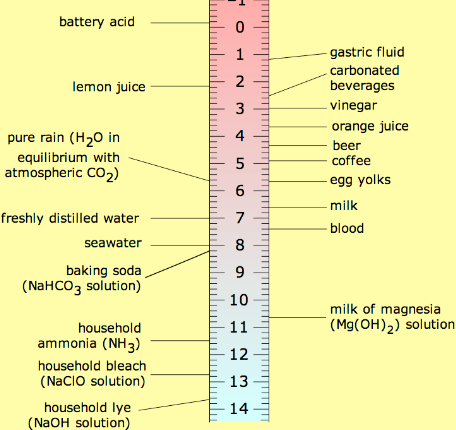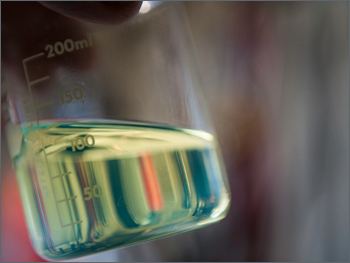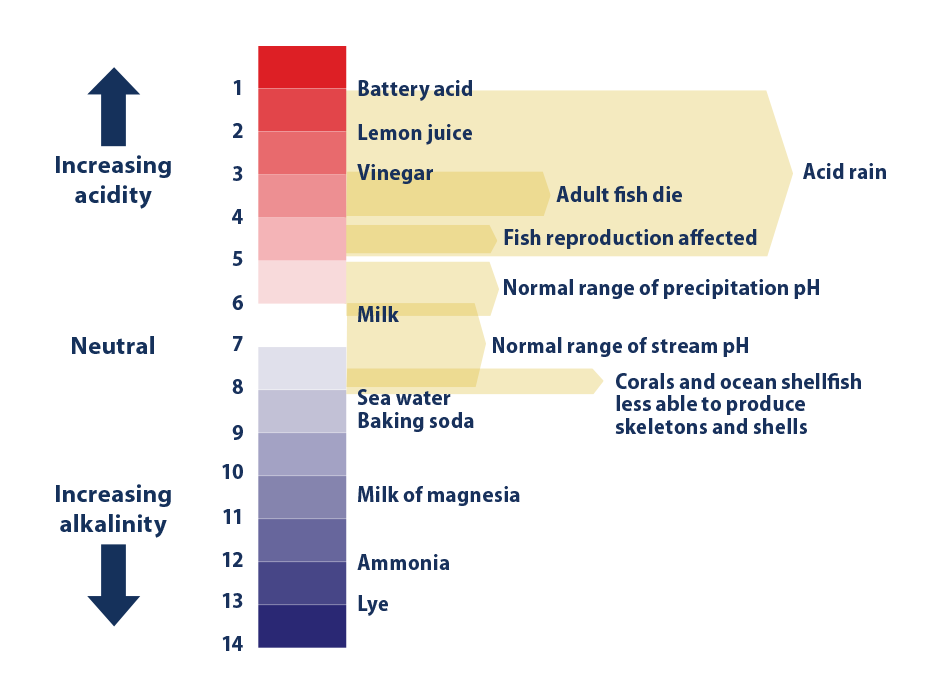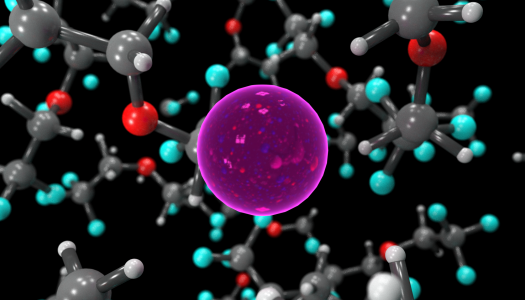
n this tutorial:
- Molar masses
- Grams – moles – molecules calculations
- How to calculate ions
- Handy links
As I mentioned in the past tutorial, the word “mole” refers to 6.02 x 10²³ things. Because this is a really really big number, the only thing we use this number for is to count really really small things like atoms or molecules. In other words, Santa’s not bringing you a mole of wheat for Christmas, no matter how good a baker you are.
Sometimes being on the “nice list” is more trouble than it’s worth.
However, if your chemistry teacher is really nice, maybe you’ll get a mole of something toxic in your stocking instead!
Molar masses:
If you guessed that the term “molar mass” refers to the mass of a mole of something, you’re right. For example, if you have a mole of water molecules, the molar mass won’t be very big. On the other hand, if you have a mole of those chewy hard candies your grandma gives you, the molar mass will be a lot bigger.
You’re so skinny! Have a mole of butterscotch candies!
To understand how to calculate the molar mass of a compound, we first have to look at the periodic table. I’ll wait while you go get one.
OK. Now that you’re back, let’s take a look at the little box for oxygen. It should look something like this:
I think my graphics skills are coming along nicely.
This little box tells you the following information:
- The element oxygen has the atomic symbol “O”
- The atomic number of oxygen is 8, which also means it has 8 protons.
- The average atomic mass of oxygen is 16.0.
It’s that last thing that we’re interested in. We usually like to have units to go along with our numbers, but the “16.0” doesn’t really have any units, nor is there a single answer that I can just tell you. Instead, it means two different things:
- The average atomic mass of a single atom of oxygen is 16.0 atomic mass units (amu). In other words, if you were to take all of the oxygen atoms in the whole universe and average their weights, the average would be 16.0 atomic mass units.
- The mass of a mole of oxygen atoms (unsurprisingly, the “molar mass”) is 16.0 grams. In other words, if you have 16.0 grams of oxygen atoms, you’d have 6.02 x 10²³ atoms in your sample.¹
The reason we can do this is because of a number known as Avocado’s Avogadro’s number. Which is, unsurprisingly, 6.02 x 10²³. The reason this number was chosen was to make your life easier, because it allows you to have one number on the periodic table that stands for both the average atomic mass, as well as the molar mass of an element. If this number were something different, you’d need more than one number, which would suck.
Anyway, let’s find the molar mass of water, H₂O:
- In a single water molecule, there is one atom of oxygen. As we saw above, oxygen weighs 16.0 amu per atom, or 16.0 grams per mole. We’ll go with the mole one from now on.
- In this single water molecule, there are two atoms of hydrogen. Given that the molar mass of hydrogen is 1.0 g/mol (check out the periodic table), the mass of both oxygen atoms together is 2.0 grams.
If you add the mass of oxygen (16.0 grams) to that of hydrogen (2.0 grams), you end up with a molar mass of 18.0 grams/mol.
Here are some other examples for you to figure out (answers are given below):
Find the molar mass of:
- HNO₃
- Ca(NO₃)₂
- NH₄NO₃
Answers:
- Nitric acid has one hydrogen atom (1.0 g/mol), one nitrogen atom (14.0 g/mol), and three oxygen atoms (3 x 16.0 g/mol). If you add them up, you get 63.0 g/mol for the molar mass of nitric acid.
- Calcium nitrate has one calcium atom (40.1 g/mol), two nitrogen atoms (2 x 14.0 g/mol), and six oxygen atoms (6 x 16.0 g/mol). If you add them up, you get a molar mass of 164.1 g/mol.
- Ammonium nitrate has two nitrogen atoms (2 x 14.0 g/mol), four hydrogen atoms (4 x 1.0 g/mol), and three oxygen atoms (3 x 16.0 g/mol). This makes the molar mass 80.0 g/mol.
Converting between moles, grams, and particles
Now that you’re A-OK with the world of molar masses, it’s time to teach you how to use moles to do actual chemistry. After all, you’ve got to measure things using grams with a balance – if you tried to either count the particles you’re working with, it would take a very long time for you to get started with your experiment.
To do these conversions, you’ll need the following chart:
In case it’s not intuitively obvious what this chart means (and why would it be?), here’s how to use it:
If you’re converting between particles and moles, you’ll use “6.02 x 10²³” as your conversion factor.
If you’re converting between moles and grams, you’ll need to know the molar mass of the compound in question.
You can’t convert between particles and grams without first converting to moles.
That said, doing mole calculations is no different than doing any other unit conversion – after all, you’re just converting from grams to moles instead of from inches to centimeters. The specifics may change, but the idea is exactly the same.
An example: Convert 97.4 grams of NaCl to moles.
Step 1: Draw a t:
Step 2: Put whatever you know in the top left corner.
Since the problem actually says “97.4 grams of NaCl”, write “97.4 grams NaCl” in the top left:
Step 3: Put the units you already wrote into the bottom right corner.
Step 4: Put the units of what you’re trying to find in the top right corner.
Since we’re trying to convert grams of NaCl to moles, put “moles of NaCl” in the top right corner:
Step 5: Put the conversion factors in front of the units on the right side of the t.
This seems like it would be hard, except that we have the following rules that you always need to follow when doing simple mole calculations:
- Always write “1” in front of “moles”
- Always write “6.02 x 10²³” in front of “atoms” or “molecules.”
- Always write the molar mass of the compound in front of “grams.”
If you always follow these steps, you can’t go wrong. Let’s do them here!
- In front of “moles of NaCl” we need to write a “1”. Why? Because “1” always goes in front of “moles.”
- In front of “grams of NaCl”, we need to write the molar mass of NaCl (it’s 58.5 g/mol). Why? Because we always write the molar mass of the compound in front of “grams.”
Step 6: Do the math.
These t-chart things that I mention here are just fancy ways of writing fractions. Specifically, the one above is another way of writing the calculation:
The answer to this is 1.66 moles NaCl.
Cows are often known to lick blocks of our friend NaCl – another way of demonstrating that they’re dumb as hell.²
Let’s do another, more awesome example: Convert 77.2 grams of CH₄ to molecules.
As you can see from the chart above, this will require two calculations. The first calculation will be used to convert grams of methane to moles, while the second calculation will convert moles of methane to molecules. This doesn’t make the problem any harder – it just adds another step that looks just like the others. Let’s see:
Step 1: Make a t:
Step 2: Put the thing you know from the question in the top left:
Step 3: Put the units of what you know (the thing you put in the top left) in the bottom right of the t:
Step 4: Put the units of what you want to find in this step in the top right:
Step 5: Put the conversion factors in front of each unit.
Remember: “1” always goes in front of moles and a molar mass (for methane, it’s 16.0 grams) always goes in front of grams!
Step 6: Since we have one more calculation to do (to convert to molecules), add another section to the t:
Step 7: Put the units of whatever is in the top left at the bottom right:
Step 8: Put the units of whatever you’re trying to find in the top right:
Step 9: Put conversion factors in front of each unit.
“1” goes in front of moles, and “6.02 x 10²³” goes in front of molecules:
Step 10: Since this finished t-chart represents a fraction…
Just solve this calculation to find that you’ll have 2.90 x 10²⁴ molecules of methane.
Finding numbers of ions:
Let’s say that instead of finding number of molecules, your teacher gives you a problem which asks for the number of ions present in an ionic compound. This is a reasonable question, because our calculations give answers in “molecules”. However, ionic compounds don’t come in the form of molecules, so we need to find the ions instead.
It turns out that this is pretty simple. Just multiply the number of molecules by the number of ions present in the compound’s formula.
Let’s say that you were told to find the number of ions in some quantity of NaCl and you used the above method to find that you had 1.00 x 10²³ “molecules”. Since NaCl is an ionic compound and doesn’t contain molecules, we have to take our final answer and multiply it by the number of ions that’s present in the formula “NaCl”. As you can see, NaCl has two ions, so our final number of ions in this calculation would be 2.00 x 10²³ ions. Likewise, if the formula was CaF₂, we’d have 3.00 x 10²³ ions because calcium fluoride has a total of three ions (one calcium, two fluoride).
As my son says, easy peasy lemon squeezy.
I’m guessing that lemons don’t use the same expression.
Some common questions and problems that students have:
- Question: Is there a simpler way of doing this?
- Answer: Not a reliable one. This will work, guaranteed.
- Question: Should I just memorize each type of calculation?
- Answer: No. If you forget one, you’ll be out of luck, but if you know the steps, you don’t need to memorize anything. This method is also handy for stoichiometry, which you’ll be seeing a lot of.
- Question: Why do I need to find the number of molecules in anything? It’s not like I can count them or anything.
- Answer: It’s traditional, and as far as I know, there’s no reason you’d ever need to know this. It is handy to find the number of ions in an ionic compound, but not for the type of calculations shown here.
- Question: Did they name the mole after an actual mole?
- Answer: No, it’s named after the German word molekül, which means “molecule.” I’m guessing you’d already figured that out, though.
Additional information:
- Video: Mole Calculations 1: While it’s not an exciting video, it does a nice job of walking you through the basics.
- Video: Mole Conversions: It’s slightly more exciting than the one above, and also explains these concepts well.
Footnotes:
- You wouldn’t believe the terminology controversies that surround the terms “average atomic mass”, “atomic mass”, “relative atomic mass”, and about a million other things that are out there. I’m using the terms “average atomic mass” for elements because that is the simplest and most common, and using “molar mass” for moles of anything because that’s pretty common, too.
- Salt licks are actually used to ensure that cows get the necessary nutrients they need to survive. In the Prose Edda (a 13th century work of Icelandic mythology) we also hear the story of a divine cow named Auðhumla, who created the ancestor of the gods from a salt lick, which was apparently activated with the cow’s tongue. I didn’t just make that up. Check for yourself: Icelandic / English / Wikipedia page
This webpage is licensed under the Creative Commons Attribution-NonCommerical-ShareAlike 4.0 International license (CC BY-NC 4.0). For more information about this license and how it affects how you can use the contents of this site, click here. Any links in the body of the text or elsewhere on this page are not covered under this license, and the copyright holder should be contacted directly for their terms of use.
About this resource
Available in the following languages
Resource level
SecondaryAuthor
Publisher
License
CC BY-NC / CC BY-NC-SA





